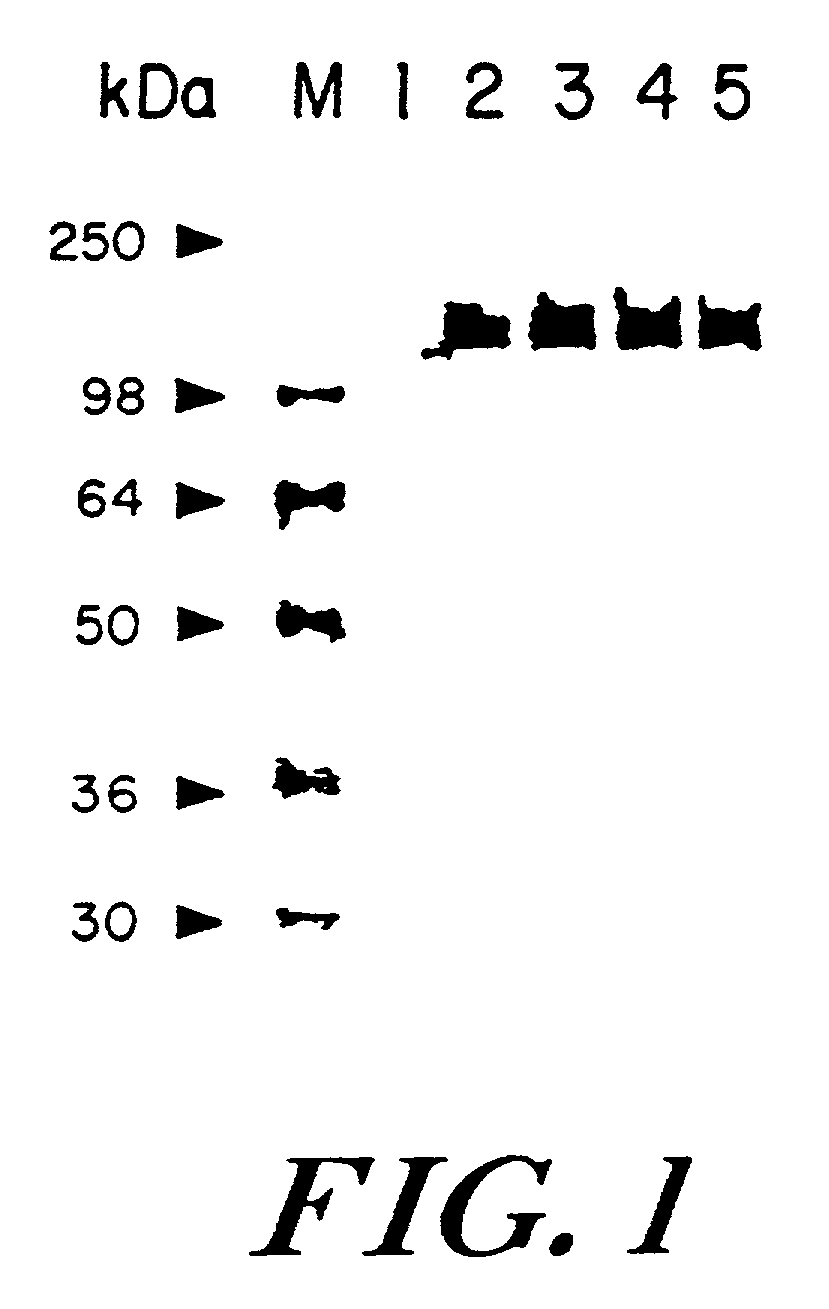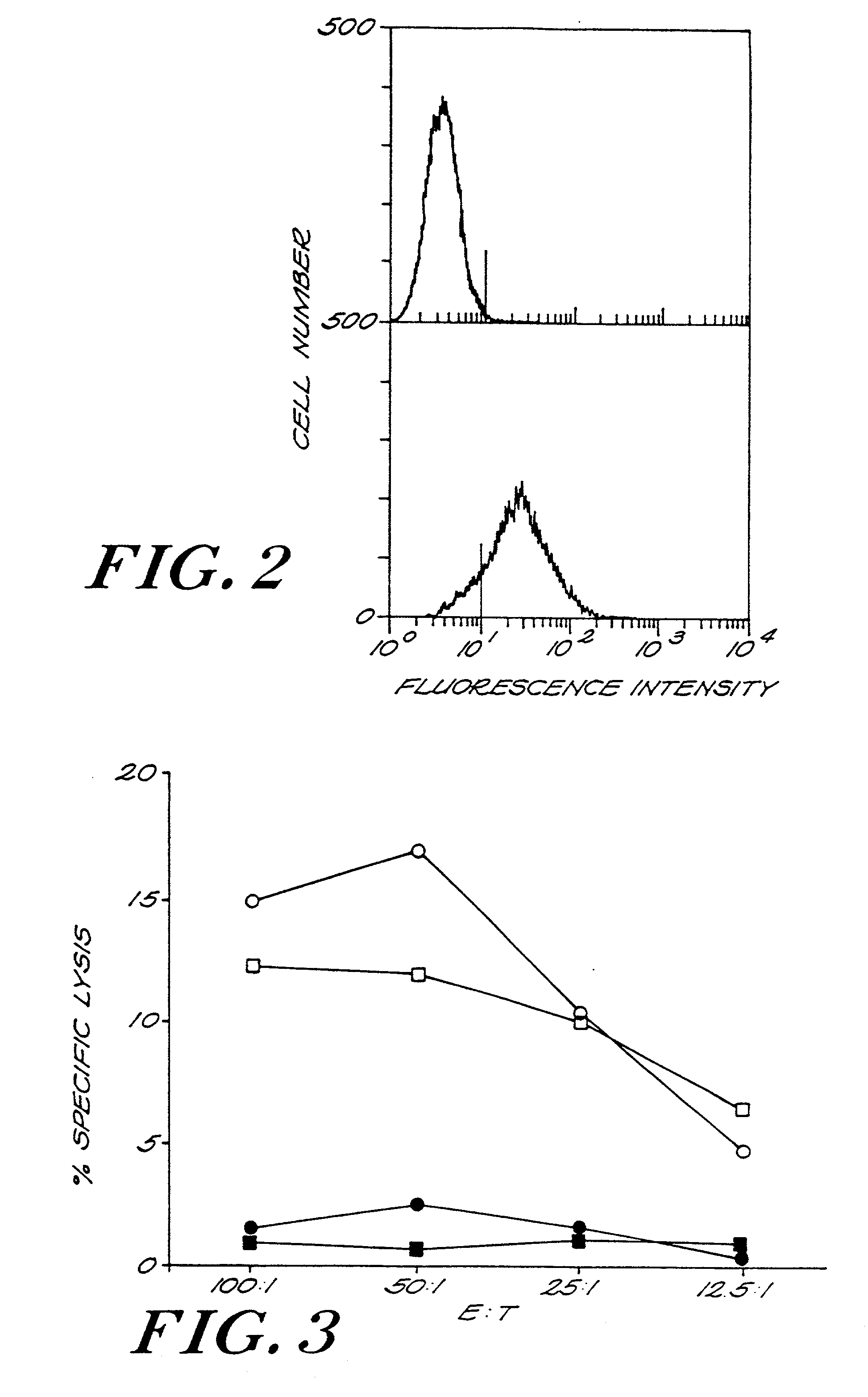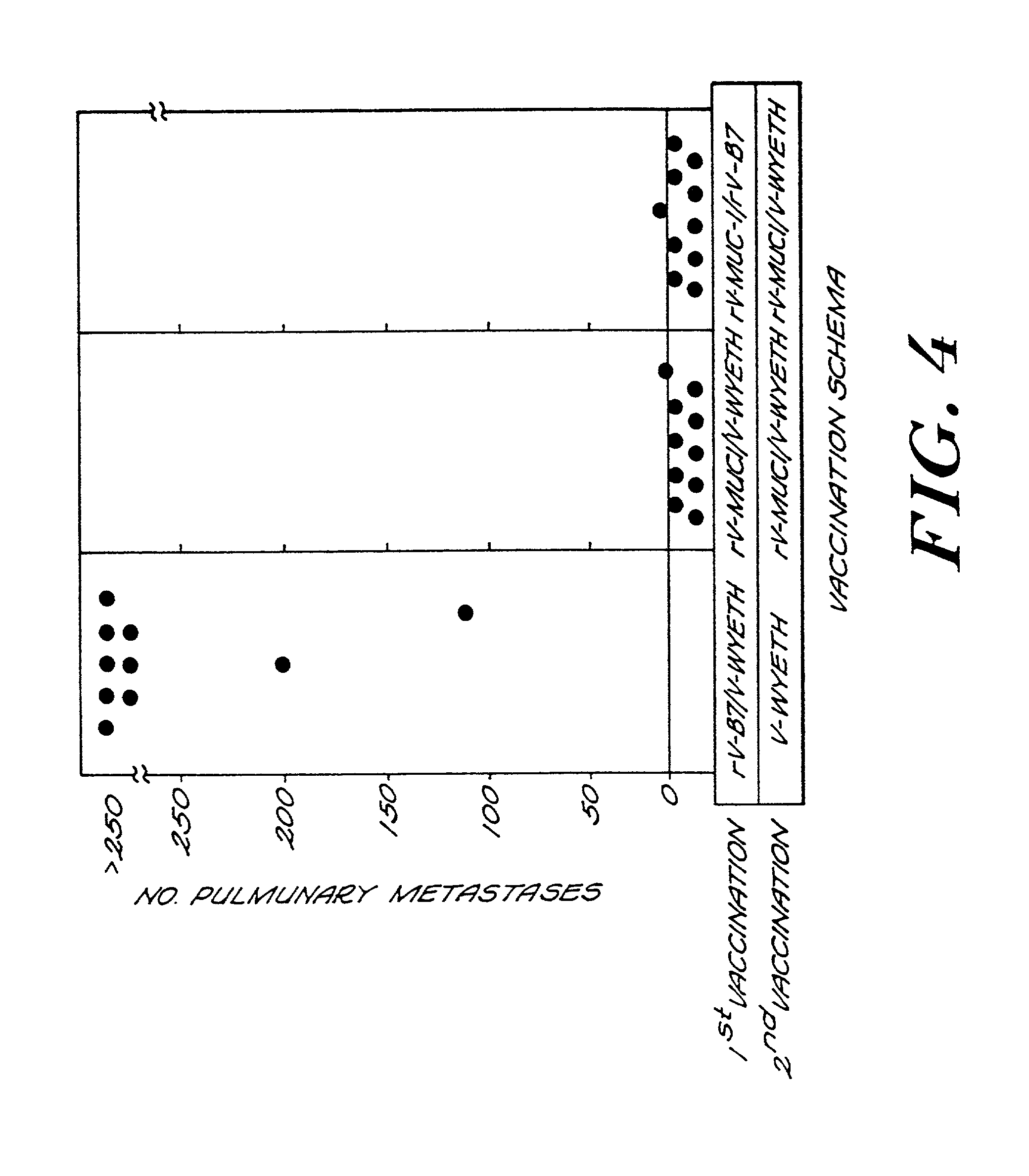Recombinant pox virus for immunization against MUC1 tumor-associated antigen
a technology of immunization and tumor, applied in the field of immunotherapy of cancer, can solve the problems of reducing the efficacy of vaccines, reducing the immune response to neoplastic cells, and often failing to eliminate tumors, so as to reduce the possibility of undesired recombination, and reduce the possibility of recombination
- Summary
- Abstract
- Description
- Claims
- Application Information
AI Technical Summary
Benefits of technology
Problems solved by technology
Method used
Image
Examples
reference example 1
[0058]A number of pox viruses have been developed as live viral vectors for the expression of heterologous proteins. Representative vaccinia virus strains such as Wyeth and MVA have been disclosed previously. (Cepko et al., Cell 37:1053–1062 (1984); Morin et al., Proc. Natl. Acad. Sci. USA 84:4626–4630 (1987); Lowe et al., Proc. Natl. Acad. Sci. USA, 84:3896–3900 (1987); Panicali & Paoletti, Proc. Natl. Acad. Sci. USA, 79:4927–4931(1982); Mackett et al., Proc. Natl. Acad. Sci. USA, 79:7415–7419 (1982)). Representative fowlpox and swinepox virus are available through the ATCC under accession numbers VR-229 and VR-363, respectively. The Wyeth strain of vaccinia is available through the ATCC under accession number VR-325.
DNA Vectors for In Vivo Recombination with a Parent Virus
[0059]Genes that code for desired carcinoma associated antigens are inserted into the genome of a pox virus in such a manner as to allow them to be expressed by that virus along with the expression of ...
example 1
Construction of Recombinant Vaccinia Virus Encoding MUC1 Gene Sequences
A. Mini-MUC1 Gene Vector
[0066]The human DF3 / MUC1 cDNA was constructed from two cloned cDNA segments [Merlo, et al., supra; Abe, M. et al., surpa]. A 1.8 kb EcoRI fragment of MUC1 cDNA reported as containing 10 tandem repeats and its 3′ unique sequence was inserted into Bluescript™ plasmid (Stratagene, La Jolla, Calif.) at the EcoRI site and designated pBs-MUC1. The 5′ end of the MUC1 gene was generated from another MUC1 clone by PCR using MUC1 specific primers. The 200 base pair amplification fragment was inserted into pBs-MUC1 at the HindIII and HindIII sites creating pBS-miMUC1 containing the “mini” MUC1 gene (sometimes referred to herein as “miMUC1”). However, DNA sequence analysis of the miMUC1 gene confirmed that this gene contained the appropriate signal and start site, but not 10 tandem repeats. Instead it contained 7 repeats that showed some variation. The DNA sequence of the repeated portion of the miMUC...
example 2
Characterization of Recombinant Vaccinia Virus With miMUC1 Insert
A. Southern Blot Hybridization Analysis
[0078]BSC-1 cells (ATCC CC 126) were infected at an MOI of 10 with either miMUC1 recombinant vaccinia virus (designated rV-MUC1) or V-Wyeth. The viral DNA extraction, restriction endonuclease digestion and Southern blotting was performed as previously described (see e.g., Kaufman, H., et al. (1991) Int. J. Cancer. 48:900–7). The results indicated that the miMUC1 gene was stably inserted into the HindIII region of the vaccinia genome.
B. Western Analysis of Protein Expression and Stability
[0079]Parallel confluent BSC-1 cells were infected with either parental wild type vaccinia virus (V-Wyeth), or rV-MUC1 at an MOI of 5 in Dulbecco's modified Eagle's medium containing 2.5% FBS. After an overnight infection, cells in one plate were scraped and lysed in hypotonic lysis buffer (100 mM Tris-HCI pH 8.0, 100 mM NaCI, 0.5% NP-40, and 0.2 mM PMSF). The infected cells in the corresponding pa...
PUM
| Property | Measurement | Unit |
|---|---|---|
| volume | aaaaa | aaaaa |
| concentration | aaaaa | aaaaa |
| volume | aaaaa | aaaaa |
Abstract
Description
Claims
Application Information
 Login to View More
Login to View More - R&D
- Intellectual Property
- Life Sciences
- Materials
- Tech Scout
- Unparalleled Data Quality
- Higher Quality Content
- 60% Fewer Hallucinations
Browse by: Latest US Patents, China's latest patents, Technical Efficacy Thesaurus, Application Domain, Technology Topic, Popular Technical Reports.
© 2025 PatSnap. All rights reserved.Legal|Privacy policy|Modern Slavery Act Transparency Statement|Sitemap|About US| Contact US: help@patsnap.com



